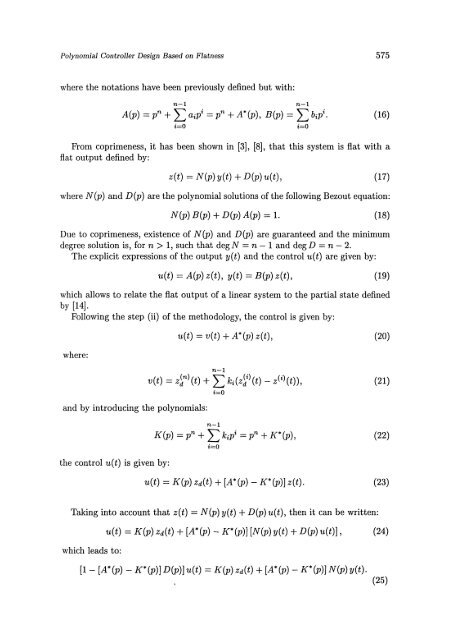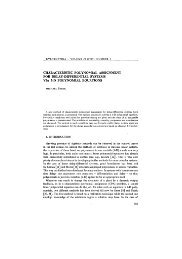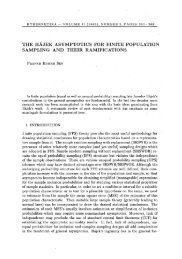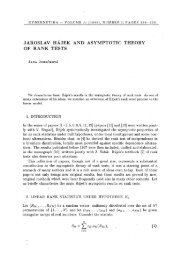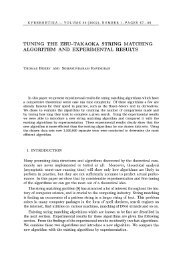polynomial controller design based on flatness - Kybernetika
polynomial controller design based on flatness - Kybernetika
polynomial controller design based on flatness - Kybernetika
You also want an ePaper? Increase the reach of your titles
YUMPU automatically turns print PDFs into web optimized ePapers that Google loves.
Polynomial C<strong>on</strong>troller Design Based <strong>on</strong> Flatness 575<br />
where the notati<strong>on</strong>s have been previously defined but with:<br />
A(p) =p n + H J2 a iP { =p n + A*(p), B(p) = J2 b iP \ (16)<br />
i=0 i=0<br />
From coprimeness, it has been shown in [3], [8], that this system is flat with a<br />
flat output defined by:<br />
z(t) = N(p)y(t) + D(p)u(t), (17)<br />
where N(p) and D(p) are the <str<strong>on</strong>g>polynomial</str<strong>on</strong>g> soluti<strong>on</strong>s of the following Bezout equati<strong>on</strong>:<br />
N(p)B(p) + D(p)A(p) = l. (18)<br />
Due to coprimeness, existence of N(p) and D(p) are guaranteed and the minimum<br />
degree soluti<strong>on</strong> is, for n > 1, such that degiV = n — 1 and degD = n — 2.<br />
The explicit expressi<strong>on</strong>s of the output y(t) and the c<strong>on</strong>trol u(t) are given by:<br />
u(t) = A(p) z(t), y(t) = B(p) z(t), (19)<br />
which allows to relate the flat output of a linear system to the partial state defined<br />
by [14].<br />
Following the step (ii) of the methodology, the c<strong>on</strong>trol is given by:<br />
where:<br />
and by introducing the <str<strong>on</strong>g>polynomial</str<strong>on</strong>g>s:<br />
u(t) = v(t) + A*(p)z(t), (20)<br />
v(t) = ->>(.) + £ *,(*«(«) - *


